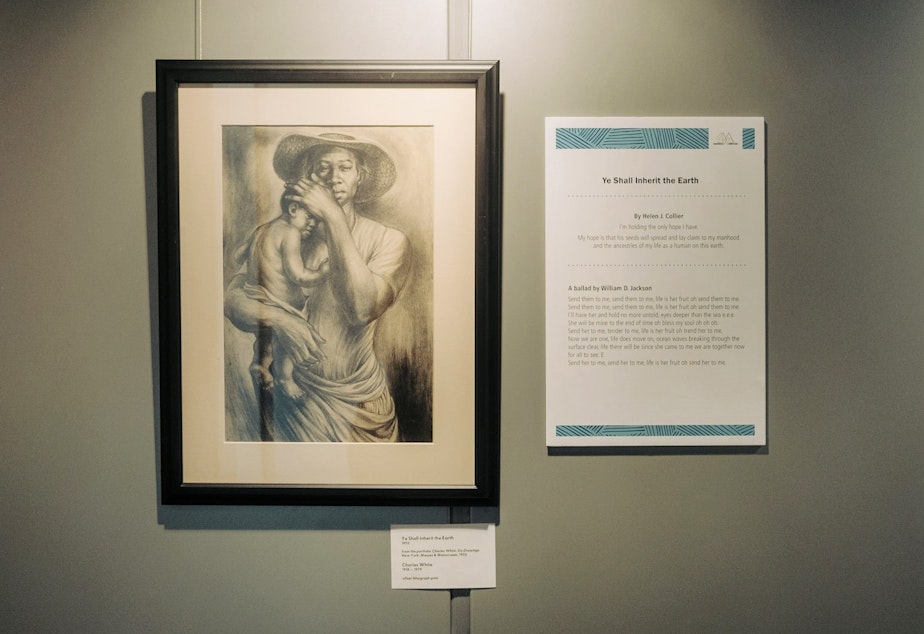Seattle Library's 'Black Activism in Print' exhibit puts city's history on display
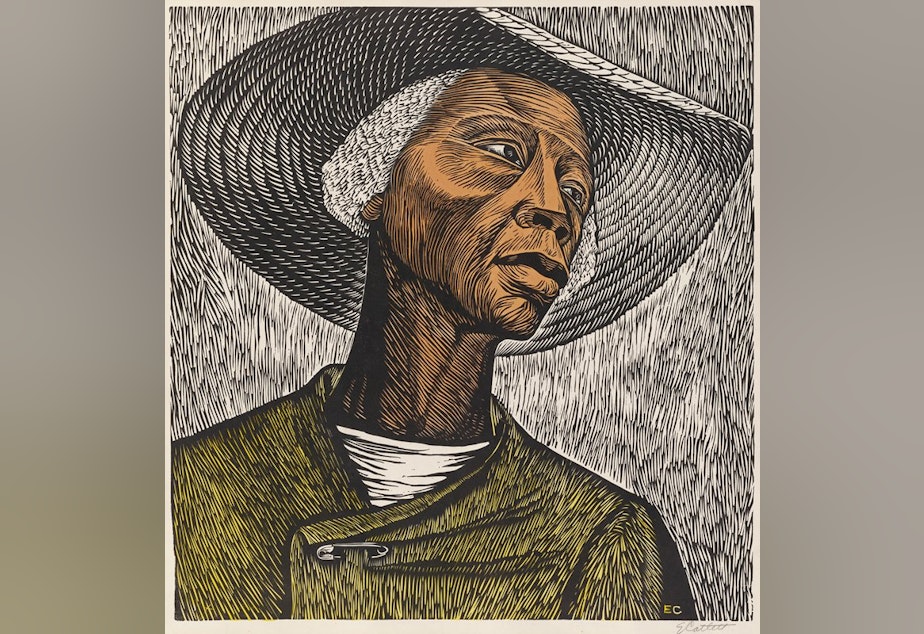
The Douglass-Truth Branch of the Seattle Public Library has been a staple of Seattle's Central District and a decades-long meeting hub for Seattle's Black community.
It's also home to the West Coast's largest African American collection.
Among its treasures: works by Elizabeth Catlett and Charles White, who were prominent artists and activists in the mid to late 1900s.
Many of these pieces have been tucked away — until now.
The "Black Activism in Print" exhibit at the Central Library proudly displays artifacts, photos, and striking prints from Catlett and White's portfolios. The exhibit will be available at the Central Library until Sept. 15. Seattle Public Library's African American Collection is housed at the Douglass-Truth Branch, which is in the Central District (not to be confused with the Central Branch, mind you).
The prints are simply framed, drawing the eye to the figures depicted in the images.
The print of a Black man holding a baby in the crook of his arm — Charles White's "Ye Shall Inherit the Earth" — drew in Catherine Carr for a closer look one recent summer day.
"The humanity of this man and his baby and their lives just shines through so strongly," she said, admiring the print and reflecting on the Hellen J. Collier poem printed beside it. Collier is an author with the African-American Writers' Alliance, which produced written pieces to accompany the prints.
It's a touching rendering that, through its black and white strokes, also speaks to the stark racial divides of the time. For Carr, a white woman, the print and the exhibit broadly are about more than Black history.
"It's very much the history of white America as well as Black America," said Carr, who stumbled upon the exhibit while visiting Seattle from Philadelphia. "I have ancestors who owned slaves in the southern part of America. I'm sure I have relatives who are the descendants of slaves as well. And it's something that all of us need to think about and try to figure out how we reach a point where there's justice for all."
The "Black Activism in Print" exhibit spoke to that need in her eyes. She said it counters some Americans' belief that we should ignore that part of our country's history.
It's reflections like this that Taylor Brooks wanted to inspire when she curated the collection.
Brooks is the African American Collection and community engagement librarian at the Douglass-Truth Branch.
She worked with artists Esther Ervin — who has her own legacy in the arts community — to have the prints freshly, simply framed.
"These prints were kept in a portfolio, not in great condition," Brooks said. "And she was really able to breathe new life into these art pieces."
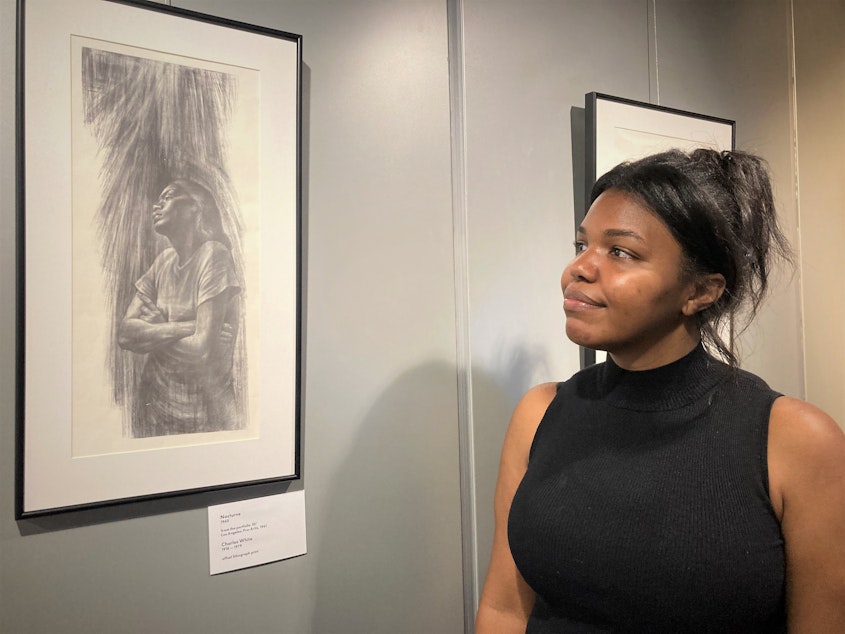
The prints are just a sampling of the Douglass-Truth Branch's extensive African American Collection, which consists of more than 10,000 items, from art to artifacts and periodicals. It's the culmination of the work done by the Delta Upsilon Omega Chapter of the Alpha Kappa Alpha Sorority, Inc., the nation's first Black sorority, to preserve these pieces of Black art and history in Seattle.
Crystal Tolbert Bell has been the historian for the Delta Upsilon Omega Chapter for 31 years now. She said the African American Collection was started in the 1960s as part of an effort to save the Douglass-Truth Branch, and is now a "pivotal" part of the library system.
"The exhibit allows us to share with the community the beginnings of our collection, how members of our sisterhood inspire the community, its artists, businesses and political leaders, to unite as a collective and to work together," Tolbert Bell said. "I want everyone who visits to feel proud to live or visit a place like the Douglass-Truth library, right here in Seattle, Washington."
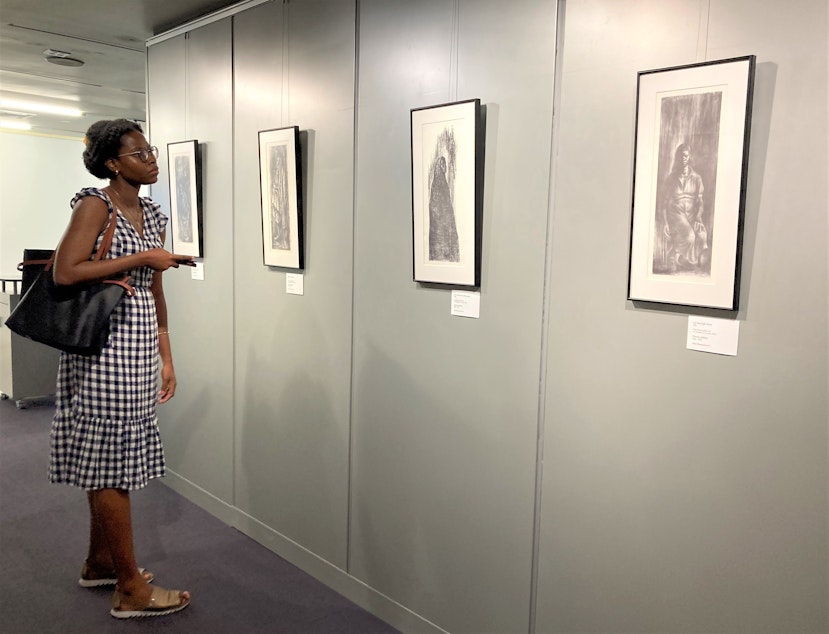
Some of the items, like photos from a Black women's writing exhibition in the 1980s, speak to the influential people who have come through the Douglass-Truth Branch: Maya Angelou, Audrey Wright, and Esther Hall Mumford are among them.
"We still have some of those relics, some of those gems from that time to really kind of inform you of how important and how crucial this branch was to the community," Brooks said, referring to photos included in the exhibit.
Titans like Angelou are pictured beside Seattle's own giants, like Dr. Millie Russell, who was integral in the creation of the African American Collection at Douglass-Truth.
"These women were determined," Brooks said about the Alpha Kappa Alpha members who donated the items on display. "They had a vision, and they were able to accomplish amazing things. And it's so important that we continue to tell that story to younger people who may not know the story of Douglass-Truth."
Younger people, as well as people coming to Seattle for the first time, may not know about the rich Black history of the Central District.
Pam Brown certainly didn't know the extent of it when she first moved to Seattle from Chicago in 1982.
"I come from a strong civil rights background in Chicago and New York. And so, Seattle is a little bit different, I'll say," Brown said. "But I found my place when the Central District had a lot more people of color in it. That became my community."
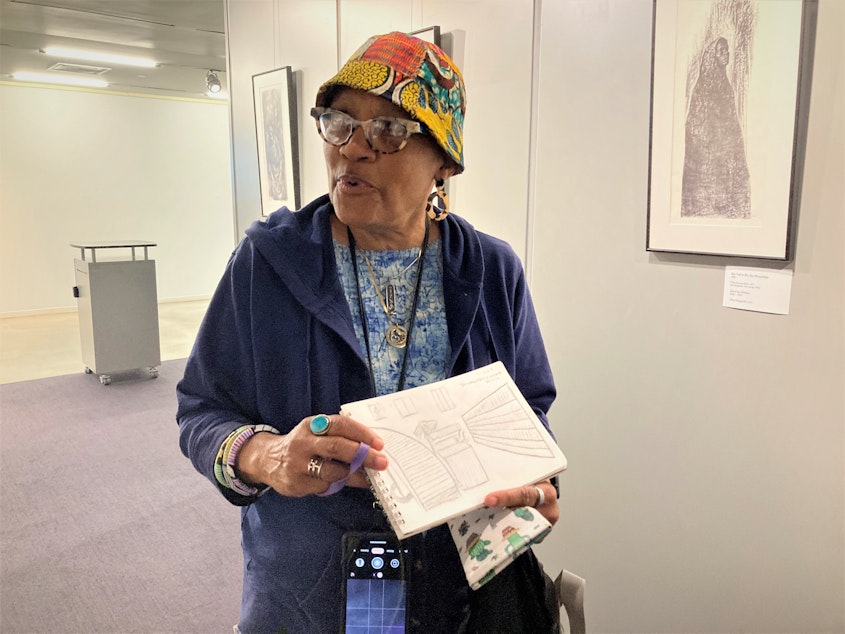
Brown is an artist in her own right. She was inspired to sketch the Central Library as she admired the prints.
"I know some of those artists," she said, smiling. "It's one place where, you know, you're going to get a Black collection. Because when you go to other libraries, you can't find who you're looking for."
To Brown, the exhibit and the Douglass-Truth Branch itself are simple "priceless" for the role they play in representing the Black community.
"It's essential," she said. "It's an essential structure and collection because it's the only place you're going go in Seattle to find blackness in one place."
It holds its place in Seattle history now, front and center, at the Seattle Central Library through Sept. 15 — and always at the Douglass-Truth Branch in the Central District.

